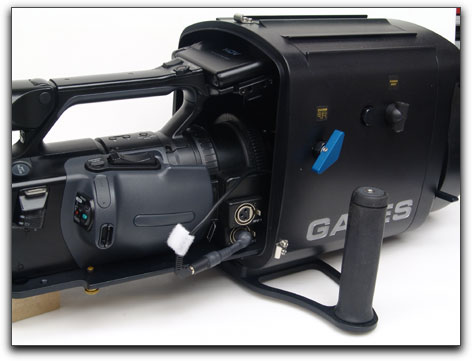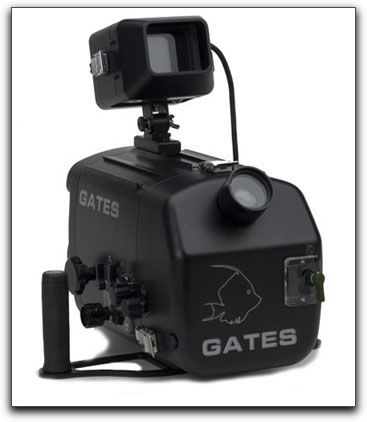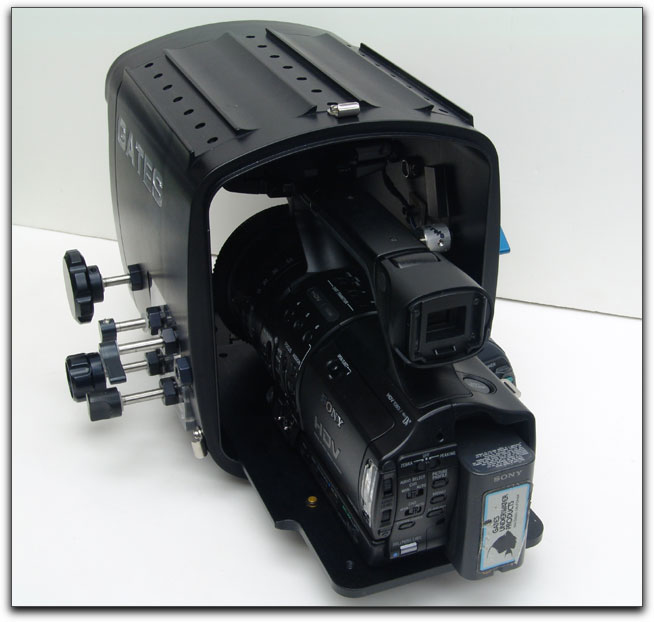
January 2, 2006
www.gateshousings.com
$4,440
Review by Steve Douglas
Now that you have invested your hard earned cash in order to buy that High Definition Video Sony FX1 or Z1U you've been wanting, trying to decide which underwater housing to slide it into is a major concern to any underwater film maker. The Sony FX-1 and Z1U are both expensive camcorders for most, and wanting the utmost in protection for them is of prime consideration.
There are several factors to concern yourself with; you certainly must be assured of your camcorders protection from the elements, the housing's durability, and ease of use. Your housing must also supply all the necessary controls under the ocean that you would need and want when topside where the camcorder would be in your hands or on your tripod.
Gates Underwater Products has produced just the thing for the scuba diver and filmmaker who wish to bring back the beauty of the depths on high definition video. In business for over 36 years, the San Diego based Gates Products have continually been in the forefront of providing underwater housings for the underwater photographer and videographer almost as quickly as the camcorders hit the market. Keeping up with the many electronic innovations to hit our shores has not always been easy but whether it was 8mm, Mini DV or HDV, Gates has been there for those who insist that the underwater world must be shared via photography and video.
The housing for the FX-1 and Z1U provides almost everything one could ask for. To start off with, made from machined aluminum, it is rated for depths of up to 450 feet/137 meters. Since 98% of most diver/videographers rarely venture below 130 feet/40 meters and the remaining 2% rarely drop below 200 feet/61meters, it is safe to say that this housing can withstand a lot more than anyone will throw at it. The aluminum itself is a 6061 T6 tempered material with a black type III hard anodized finish and then sealed with a nickel acetate process. Now I am not going to pretend that I understand all there is to know about the processing of this housing but I will bare witness that this housing really is bulletproof. I have seen many a Gates housing in the past dropped, bounced, scraped over underwater rocks and ledges and generally treated less respectfully than their owners should have, and the housings continued to do their job. This housing is no different.
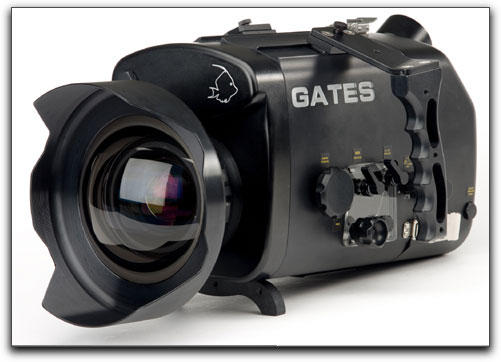
The Sony FX-1 and Z1U camcorders are good-sized cams; the flip up LCD screen, now placed on top next to the hot shoe takes up room and the Gates housing was built to accommodate that. This is no pint-sized housing; it is 16" long, 10" in height and with the handles on, 15" wide with a topside weight of 22lbs without the camcorder or batteries. You do not need to start working out at the local gym to transport this housing but I wouldn't plan on taking it out for a long hike either. Gates does supply an optional top handle to help you transport your system over land or simply to lower into or take out of the water. The larger the housing the more inherently stable it is in the water. This translates to fluid, solid (non-shaky) shots. Obviously, the converse is true: small housings are prone to a lot of shakiness. In our MTV world this seems to be more acceptable, but any feature length production or quality TV broadcast avoids a shaky camera. Once in the water, the housing, with camcorder in place, is only slightly negatively buoyant. Buoyancy can be fine-tuned, positive or negative to your preferences. This is an important asset. Just as when shooting topside, a camcorder with a bit of heft, adds steadiness to a hand held shot, I have found that a housing with a slight negative balance also aids in holding a static shot or smooth pan. I have used other housings, which were positively buoyant in the water and found them to be more susceptible to current or surge. However, keep in mind that susceptibility to surge or current is a function of the size, not necessarily it's buoyancy. The bigger it is, the more it acts like a sail. Unplanned shakiness in any shot will usually demand a retake and, underwater, most fish do not hang around for take 2, 3 or 4. Then again, the sharks might come back for another taste; ooops, I mean 'take' but that is another matter. Thus, the solid feel and balance of the Gates housing for the FX-1/Z1U provides confidence to the demanding underwater videographer.
In addition, there is a Pole-cam attachment made for those who want to put their systems in the water but not go in themselves. These pole cams, manufactured by underwater videographer, Bob Gladden, and distributed by Gates Underwater Products, are extremely useful when filming Great Whites when a cage is not handy or when doing underwater searches. The pole cam attachment to the Gates housing provides a great deal of control and matches to the housing with the safety and security of your housing and cam in mind.
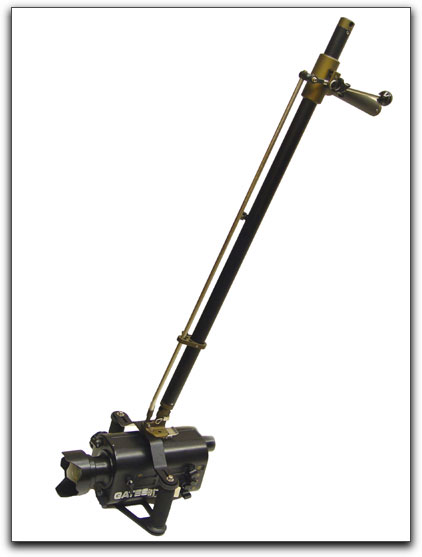
Typical of all Gates housings, the controls are mechanical and plentiful. I have always preferred a mechanical control as it is assuring to me when off on some exotic vacation or shoot somewhere that, because they are mechanical, nothing will go wrong with them. You press or turn a mechanical control and it works; there are no batteries that have been drained, no electronic boards to fry or contacts that fail when you need them most. The color coded controls that you will find most necessary underwater are all accessible with this housing, the power on/off, record/standby, zoom, switching from auto to manual focus, white balance mode/set, Iris, and neutral density filter. Optional controls for gain and white balance presets, expanded focus and shutter speed are also available.
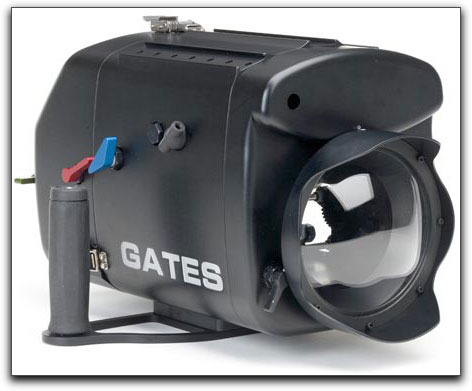
The camcorder installs neatly and simply by attaching it to a bottom 'tray' which then slides into place in the housing secured quickly by thumbscrews. Also in the housing is a color correction internal flip filter available in blue or green water versions. I find that most dive/filming conditions require the blue water version and the flip filter is easy to flip on or off. A second flip filter can be optionally installed for either a diopter for macro work or a second UR filter either blue or green.
A connection can be found inside the housing, which plugs into your video out on the camcorder. This supplies your picture should you choose to add an external color monitor to the housing. While the monitor is an optional purchase, it is one that is not superfluous. I find them to be very helpful when setting up a shot's composition or when I am swimming straight into a large school of jacks, barracuda or even hammer head sharks. The monitor fits neatly into the accessory dovetail rails, which then can be slid forward or backward to whatever location on the housing is most comfortable to you.
However, acknowledging that the HDV critical focus is extremely important due to the inherent 6X resolution over standard DV, for close up macro work and critical focus situations I bring my eye back down to the higher resolution of the magnified viewfinder on the housing's rear plate. As an extra note on this topic, the video out provided by the housing can also be used to run a feed to a surface monitor as well.
